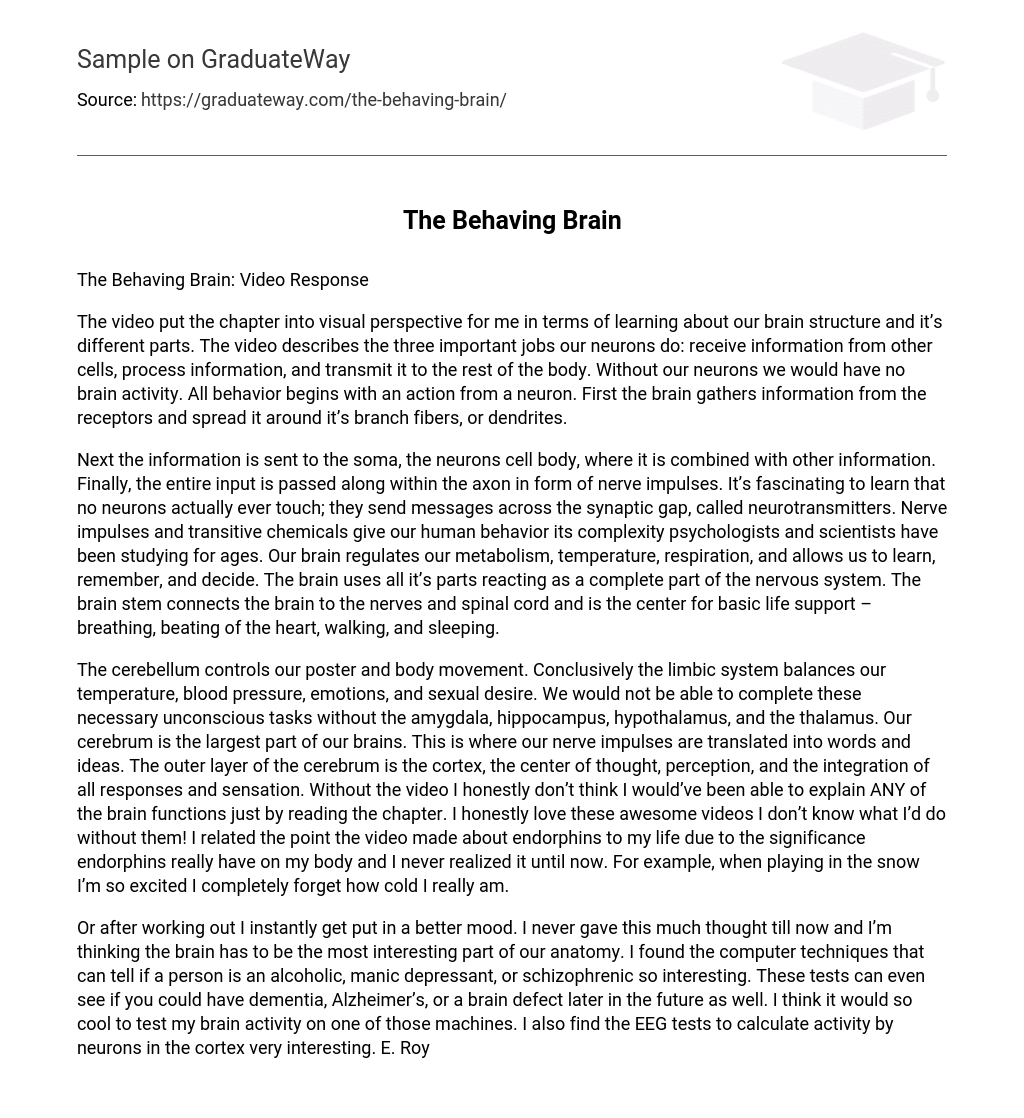The video enhanced my learning experience by visually illustrating the structure of the brain and its different parts. It provided an explanation of the three important functions performed by neurons, which include receiving, processing, and transmitting information. Neurons are essential for brain activity as all behavior originates from their actions. The brain initially collects information through receptors and then distributes it through its dendrites.
Following this, the information is sent to the soma, which is also referred to as the cell body of the neuron. Here, it combines with other data. Ultimately, the entire input is transmitted via the axon in nerve impulses. Interestingly, neurons never make physical contact with one another; instead, they communicate by transmitting messages through neurotransmitters across the synaptic gap.
Extensive research has been conducted by psychologists and scientists on the intricate nature of human behavior, which is influenced by nerve impulses and transitive chemicals. The brain, as a crucial component of the nervous system, governs diverse bodily functions such as metabolism, temperature control, and respiration. Moreover, it aids in facilitating learning, memory retention, and decision-making abilities. Acting as a connecting bridge between the brain and nerves/spinal cord, the brain stem serves as a vital center for fundamental life support functions like breathing, heartbeats, movement, and sleep.
The cerebellum is responsible for controlling posture and body movement, while the limbic system maintains balance in temperature, blood pressure, emotions, and sexual desire. The amygdala, hippocampus, hypothalamus, and thalamus perform crucial subconscious functions. Lastly, the cerebrum is involved in translating nerve impulses into words and ideas.
The video was crucial in helping me comprehend the functions of the cortex, which is responsible for thought, perception, and integrating responses and sensations. I am extremely grateful for these incredible videos as they have greatly assisted me. The video highlighted the significance of endorphins, something that resonates with me due to their profound impact on my body. This newfound understanding has made me realize how, for example, when playing in the snow, I become so enthralled that I momentarily forget about the cold temperature.
Immediately after exercising, my mood improves significantly. I have recently come to appreciate the sheer fascination of our brain, which I had never really considered before. The computer-based methods used to identify individuals with alcoholism, bipolar disorder, or schizophrenia captivate me immensely. Moreover, these tests can even anticipate the likelihood of developing dementia, Alzheimer’s disease, or a neurological disorder in the future. It would be absolutely incredible to undergo brain activity testing using one of these advanced machines.
The EEG tests that measure neural activity in the cortex are fascinating to me. E. Roy John, the director of the primary research laboratories in New York, explores neurometrics – a precise measurement of neural functioning through electrical activity. The data is visually presented on a computer using color codes. Each individual’s electrical activity corresponds to a specific color. Normal brain activity is represented by earthy green, while red indicates abnormal activity with brighter colors indicating more severe abnormalities ranging from orange to red. Lack of brain activity or deficiencies are shown as blue. Additionally, conditions like depression or dementia manifest as colored patches in various regions.
I am perplexed by the theory being studied by neuroscientists, which suggests that every action performed by the brain can ultimately be attributed to biological and chemical events occurring within it. The brain, as a whole, is a complex component of our body that can instantaneously transition between different states.





